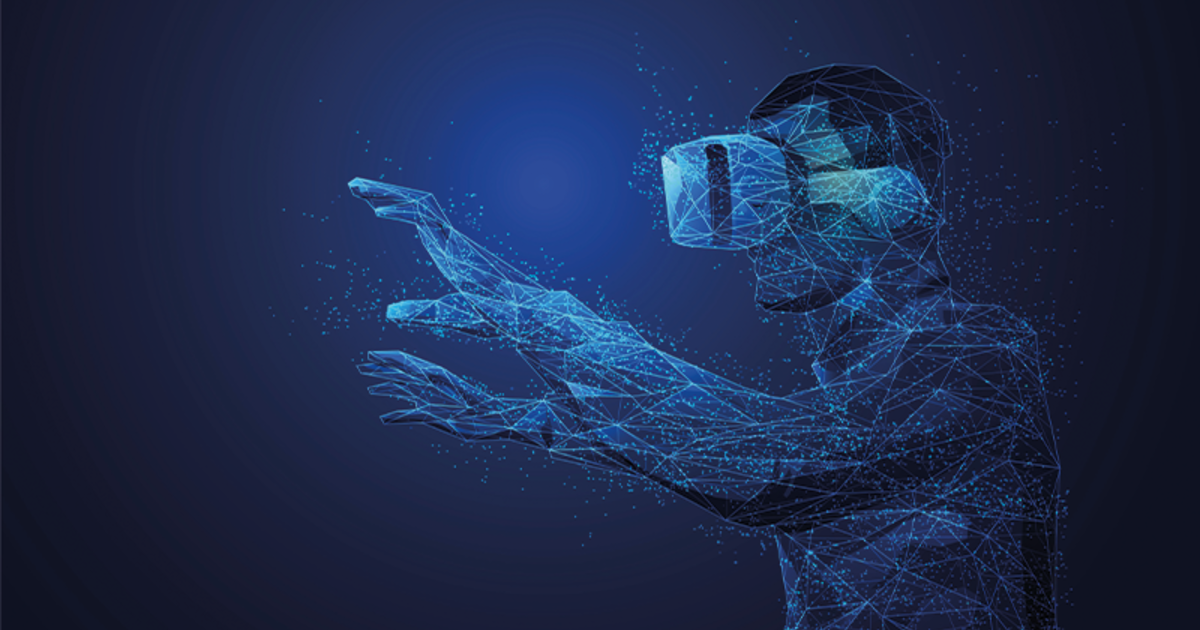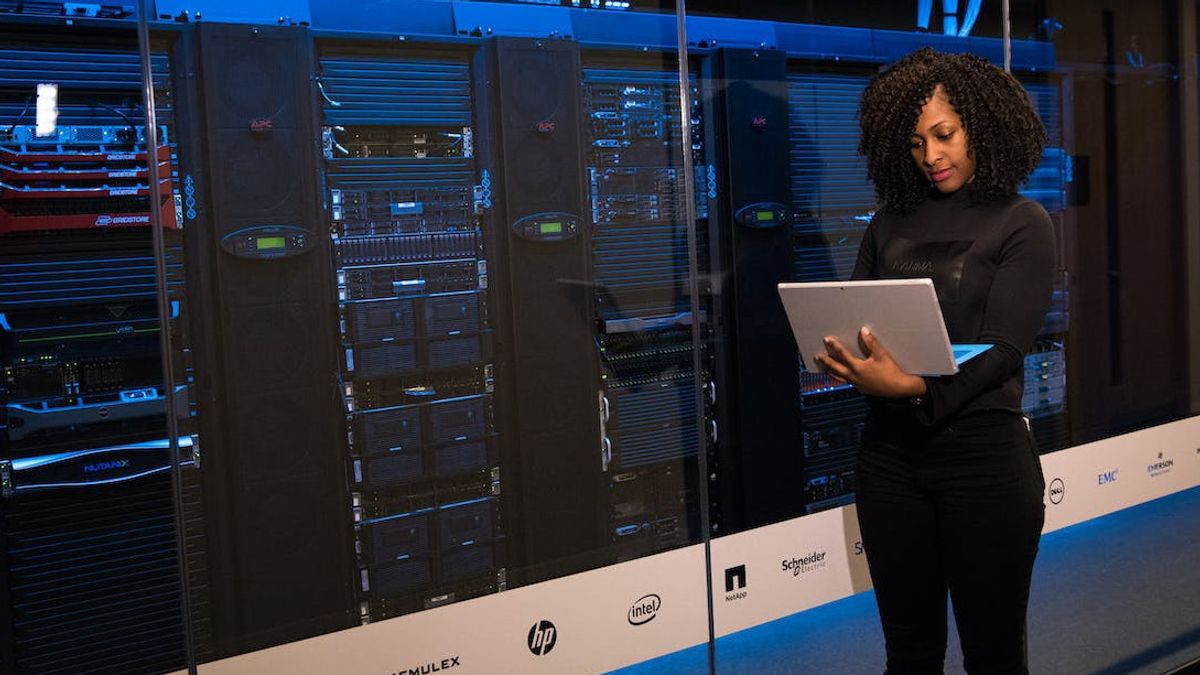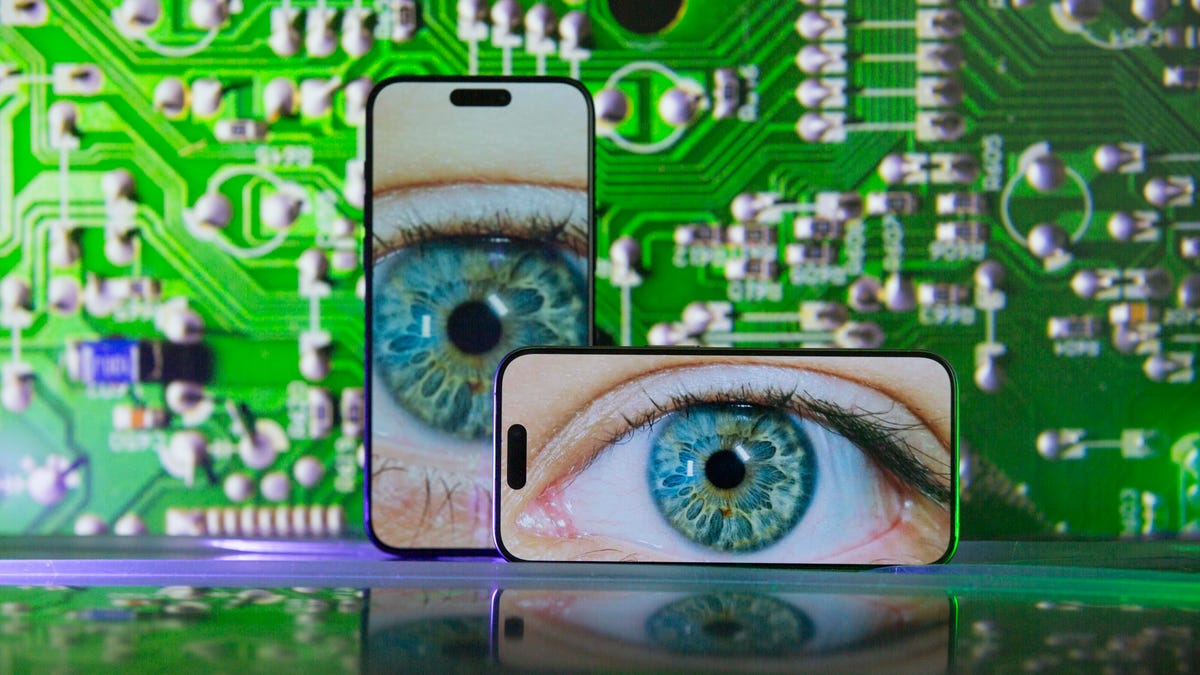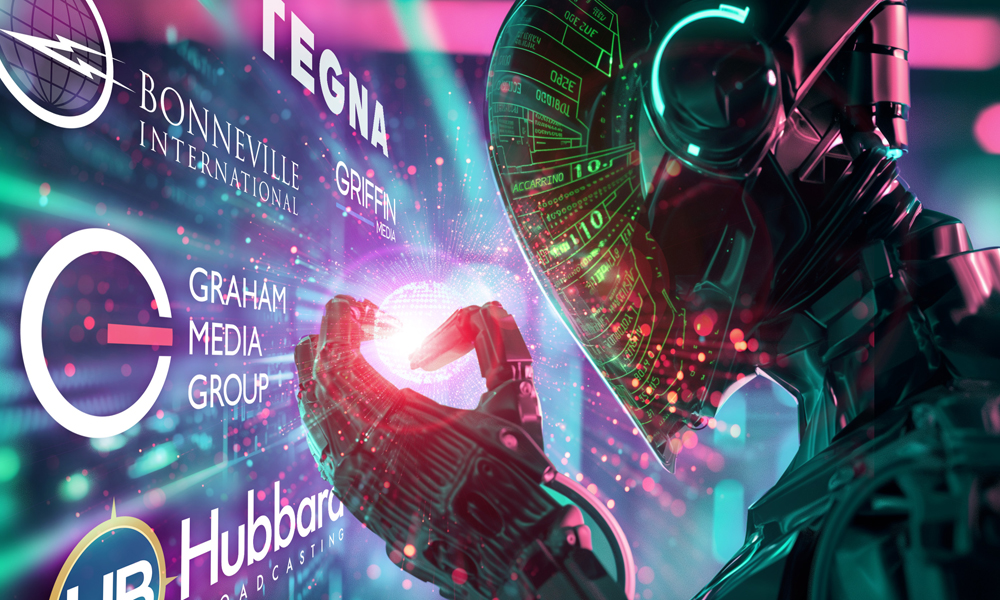- TECHSWU
- Posts
- TECHSWU #26
TECHSWU #26
Welcome to TECHSWU, your go-to destination for all things tech that matter in your daily life! From gadgets to software, we cover it all with a focus on what's relevant and usable now. Tune in to our YouTube channel, daily newsletter, and podcast for the latest updates and insights on the tech you use every day. Stay connected with TECHSWU and stay ahead in the world of technology



The global wearable medical device industry is expected to experience significant growth in the coming years, reaching a market value of $84.85 billion by 2034. This growth is driven by the increasing prevalence of chronic diseases and sedentary lifestyles, leading to a paradigm shift in healthcare. As governments and healthcare organizations prioritize early diagnosis and patient monitoring, wearable medical devices are emerging as a pivotal solution. These devices offer continuous monitoring and real-time data collection, allowing for better management of health conditions. Some key highlights from the article include:
• The wearable medical device market achieved a market size of $36,604.3 million in 2023, with a CAGR of 7%.
• The wearable therapeutic medical device segment is estimated to acquire a value share of 55% in 2024.
• The home healthcare segment is anticipated to obtain a market share of 63% in 2024.
• The wearable medical device market in the United States is expected to expand at a CAGR of 5% through 2034.
• The market in India is estimated to record a staggering CAGR of 40% over the forecast period.

The electronics industry in Kenya has experienced significant changes and advancements in recent years, particularly in relation to artificial intelligence (AI) and the Internet of Things (IoT). Some highlights from the article include:
• The evolution of AI and smart living has been most noticeable in the home electronics sector, with the shift from black and white TV sets to flat-screen color televisions.
• Kenyan consumers are increasingly opting for larger screen TVs, driven by bigger living spaces, the popularity of gaming, and the availability of paid content streaming services.
• The COVID-19 pandemic has led to a spike in sales of washing machines in Kenya, as consumers prioritize convenience and efficiency in household chores.
• The improved internet speeds and connectivity in Kenya, along with the rise of cloud computing and IoT, have enabled the development of smarter home appliances and devices.
• Consumers in Kenya are seeking products that complement their lifestyle and add value to their homes, prioritizing aesthetics and design.
• Despite the convenience of AI and smart technologies, there is still a need for greater awareness and education to fully take advantage of their benefits.
• Electronics manufacturers should focus on raising awareness and offering user-friendly products to drive greater adoption and usher in a new era of smart living in Kenya.

Sam's Club is implementing artificial intelligence (AI) technology at all of its nearly 600 stores by the end of the year. The technology uses cameras and scanners at blue gateways to confirm purchases without requiring physical receipt checks. So far, the new verification technology has been rolled out at 120 Sam's Club locations across the US, and more than half of customers at these stores have used the option, which has helped members leave clubs 23% faster. The rollout is said to represent the largest-scale implementation of member-facing AI-powered technology in the retail industry. Other retailers, including Amazon, have also been working on using AI to improve the shopping experience by eliminating checkout lines.

Virtual reality, augmented reality, and mixed reality simulation, collectively known as extended reality (ER), can provide safe, effective, and cost-efficient training for search and rescue (SAR) winch operators. VR allows trainees to fully immerse themselves in a virtual environment, while AR overlays data onto the user's physical surroundings, and MR combines VR with the use of actual controls. High-fidelity simulation technology is particularly useful for SAR training, as it can replicate the complex and dangerous conditions that winch operators often face. The Hoist Mission Training System (HMTS) developed by Bluedrop Training and Simulation combines VR and MR with full haptic technology, allowing for realistic real-time training in a variety of hoisting situations. This technology can save time, reduce costs, and improve safety, making it an invaluable tool for SAR winch operators.


Okaya EV has launched its new electric bike, the Ferrato Disruptor, priced at INR 1.60 lakh (approximately $2,200). The bike offers a range of 129km on a single charge and has a top speed of 380 kmph. Pre-bookings for the bike have already begun, with the first 1000 customers able to reserve their bike with a token amount of INR 500. Deliveries are expected to start in August this year. The Disruptor features a contemporary faired sports bike design, with twin-LED headlamps and a fully digital instrument console with Bluetooth and GPS connectivity. It is powered by a mid-mounted permanent magnet motor and comes with three ride modes - Eco, City, and Sports. The bike is available in three colors - Inferno Red, Thunder Blue, and Stealth Black. Okaya EV is offering a 3-year/30,000 km warranty on the bike, including the battery.

Kawasaki Robotics is set to unveil its new family of collaborative robots (cobots) at the Automate 2024 trade show in Chicago. These cobots, powered by NEURA Robotics' robotic assistant platform, combine safety and intuitiveness with a robust design for increased speed and productivity. The company will also showcase applications using its R Series and BX Series industrial robots, which have been developed in collaboration with partners such as Mech Mind, CRG Automation, AMT Precision Parts, and Olis Robotics. These applications include welding, finishing, multi-SKU palletizing and depalletizing, and an automated corner board solution. The new cobots and applications demonstrate Kawasaki Robotics' commitment to optimizing its product offerings and leveraging its expanding network of partners to offer limitless possibilities for its customers. Kawasaki Robotics will also host a happy hour reception at the trade show to celebrate the launch of its cobots.

Cloud computing has become an essential part of the internet business world, helping companies accelerate application development and increase operational efficiency. Here are some key highlights from the article:
• Cloud computing allows users to access computing resources such as hardware, software, and data storage through the internet network.
• One advantage of cloud computing is cost savings, as companies can utilize computing resources provided by cloud service providers without having to invest in expensive hardware or software.
• Cloud computing also provides flexibility, allowing companies to adapt to market changes and customer needs more quickly.
• Data security is important for internet businesses, and cloud service providers usually offer better security in data management compared to companies that build their own infrastructure.
• Cloud computing allows companies to focus on their core business rather than wasting resources on managing IT infrastructure.
• The 5 most popular and best cloud computing providers discussed in the article are AWS, Azure, Google Cloud Platform, IBM Cloud, and Oracle Cloud.
• Each cloud computing provider offers different monthly subscription packages at varying prices.


The year 2024 brings with it the introduction of new gadgets that aim to change our relationship with screens. Tech giants like Apple and Samsung have released innovative devices that push the boundaries of traditional screens, such as Apple's Vision Pro mixed reality headset and Samsung's Galaxy Ring wellness tracker. Startups like Rabbit and Humane AI are also making waves with their AI-fueled gadgets that rely on voice commands rather than swiping on screens. While these gadgets have big ambitions, they are met with skepticism due to their high prices, limited functionality, and lack of app optimization. Despite these challenges, these devices hint at a future where we spend less time tapping and scrolling on small screens. The potential of a screen-free future is compelling, with features like personalized AI assistants and immersive virtual screens. However, it remains to be seen if these gadgets can truly replace our smartphones and reduce our screen time.

Virtual reality (VR) has the potential to be a promising tool for reducing stress among teenagers, according to researchers at the University of Washington. In a 3-week study involving 44 Seattle teens, a VR system called the Relaxation Environment for Stress in Teens (RESeT) was used to provide stress reduction activities. The participants used the VR system an average of twice a week without being prompted and reported lower stress levels and improved mood while using it. However, there was no significant effect on anxiety and depression levels. The researchers are planning to conduct a larger, longer-term study to see if VR can have lasting effects on mood and stress. They also hope to incorporate artificial intelligence to personalize the VR experience and improve community access by offering VR headsets in schools or libraries.

AI companies are facing training data shortages and are resorting to scraping news articles without permission, leading news organizations to take action to protect their content. Publishers, including The New York Times, The Guardian, and Hearst, have blocked AI chatbots from scraping their sites, and more publishers are following suit. The rise of AI scraping is seen as an existential threat to the business models of news organizations and the integrity of journalism itself. To defend their content against AI data scraping, newsrooms are updating their terms of service to ban AI scraping, blocking AI data scraping bots, licensing training content to AI companies, and creating their own language models (LLMs) using their own archives of content. Some news organizations, such as The New York Times, have even filed lawsuits against AI companies for illegally harvesting personal data. As more publishers put up barriers to web scraping, AI companies are exploring alternative strategies, such as using so-called "synthetic data" generated by AI for machine learning. However, collaboration between AI companies and news organizations through licensing agreements may be the most viable path forward to protect intellectual property and support high-quality AI development.


Saudi Arabia is showing readiness to establish tech industrial zones, according to the Global Smart City Forum hosted by the Saudi Data and Artificial Intelligence Authority (SDAIA). Participants at the forum highlighted Saudi Arabia's strides in advanced air mobility, including plans for new airports, and the country's commitment to smart city initiatives and technology adoption. The importance of establishing green cities and utilizing data for efficient management was emphasized, along with the integration of new technologies and ensuring top-notch city services. The forum also discussed the importance of smart energy solutions, innovation-driven economies, transparent governance, intelligent transportation, and prioritizing human well-being through smart healthcare and education. Minister of Industry and Mineral Resources, Bandar Alkhorayef, highlighted the importance of smart industrial cities in enhancing technology adoption in factories and mining sites.

The recent incident involving a deepfake of a high school principal's voice has highlighted the potential harm that artificial intelligence (AI) can cause. The fake recording, which contained racist and antisemitic comments, was spread on social media after being sent to teachers in an email. This case serves as a reminder that anyone can be targeted and that the technology behind deepfake is becoming more accessible and powerful. Some highlights from the article include:
• Deepfakes are created using generative AI, which can produce hyper-realistic images, videos, and audio clips.
• It is now easier and cheaper for anyone with an internet connection to create deepfakes.
• The incident involving the Maryland high school principal shows the need for better regulation and control of this technology.
• AI-generated disinformation is not limited to audio; there are also concerns about the creation of fake nude images and other forms of manipulation.
• Some companies are taking steps to limit misuse of AI technology, but more needs to be done to prevent harm.
• Law enforcement action, consumer education, and responsible conduct among AI companies and social media platforms are all necessary to address this issue.

Artificial intelligence (AI) is becoming increasingly prevalent in education, but many teachers are unsure of how to effectively manage it in the classroom. While blocking AI may seem like the safest approach, it's important to recognize that AI is here to stay and students need to be prepared for a world where AI plays a role. According to a recent survey, 62% of teachers want to learn how to teach students to use AI responsibly and effectively. Two narratives currently dominate discussions about AI in education: one focuses on the potential for AI to automate tasks for teachers, while the other expresses concern about students using AI to cheat. School administrators should provide training and guidance for teachers to utilize AI effectively, while also establishing guidelines for responsible use by students. It is crucial for schools to prepare students to compete in an AI-driven world, consider potential biases in AI tools, and encourage experimentation with different AI tools in the classroom.

Researchers at the University of Texas in Austin have developed a new type of electronic skin, or "e-skin," that mimics human skin and could enhance robots in the future. The stretchy material retains its sensory accuracy even when it stretches, which is a significant achievement compared to current e-skin technology. The e-skin uses pressure sensors to determine the amount of force needed to complete a task, and the new model uses both capacitive and resistive responses simultaneously. This innovative technology could have numerous applications, including assisting the elderly and providing care in disaster situations. With the global medical system reaching its capacity to care for the aging population, robots could be used to provide care more efficiently and gently. In disaster scenarios, robots equipped with e-skin technology could locate and treat injured individuals, potentially saving lives. Overall, the development of e-skin technology has the potential to revolutionize various industries and improve the quality of life for many.
:max_bytes(150000):strip_icc()/MothersDay2024EC-61f0556f965544b5b703cc1d7803603d.png)
Looking for the perfect tech gift for Mom this Mother's Day? Look no further! Here are some of the best gadgets recommended by the Lifewire Editors:
• Narwal Freo X Ultra: A sleek and smart vacuum and mop combo that makes cleaning a breeze.
• Priority eClassic Plus E-Bike: A stylish and subtle e-bike perfect for leisurely rides along the beach or nature trails.
• Logitech G Cloud Handheld Gaming Device: A fantastic gaming device that can be used on the go and can play games from various streaming services.
• House of Marley Get Together 2 Bluetooth Speaker: A portable speaker that delivers serious sound and is perfect for outdoor relaxation.
• Tile Trackers: Attachable trackers that help you find frequently lost items like keys and remote controls.
• H2O Audio Tri Pro Multi-Sport Headphones: Bluetooth headphones with a built-in MP3 player, ideal for active, music-loving moms.
• Tenways AGO T E-Bike: A lightweight and comfortable e-bike that offers ease and convenience.
• Tidbyt Retro Style Display: A retro-style display that shows useful information you tell it to, reducing phone usage.
• Nextbase iQ Dashcam: A dashcam that provides real-time notifications in case of accidents or break-ins, ensuring safety on the road.
With these tech gifts, you can make this Mother's Day extra special for your tech-savvy mom!
